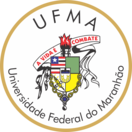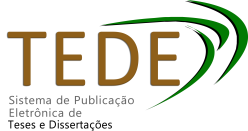| Compartilhamento |


|
Use este identificador para citar ou linkar para este item:
https://tedebc.ufma.br/jspui/handle/tede/5975Registro completo de metadados
| Campo DC | Valor | Idioma |
|---|---|---|
| dc.creator | FERREIRA, Samarah Christina Cantanhede | - |
| dc.creator.Lattes | https://lattes.cnpq.br/9288360773832536 | por |
| dc.contributor.advisor1 | HAUSER-DAVIS, Rachel Ann | - |
| dc.contributor.advisor1Lattes | http://lattes.cnpq.br/5987657587996872 | por |
| dc.contributor.advisor-co1 | ZANANDREA, Ilisandra | - |
| dc.contributor.advisor-co1Lattes | http://lattes.cnpq.br/3563486912777691 | por |
| dc.contributor.referee1 | HAUSER-DAVIS, Rachel Ann | - |
| dc.contributor.referee1Lattes | http://lattes.cnpq.br/5987657587996872 | por |
| dc.contributor.referee2 | ZANANDREA, Ilisandra | - |
| dc.contributor.referee2Lattes | http://lattes.cnpq.br/3563486912777691 | por |
| dc.contributor.referee3 | FALQUETO, Antelmo Ralph | - |
| dc.contributor.referee3Lattes | http://lattes.cnpq.br/2005727951505420 | por |
| dc.contributor.referee4 | MOCHEL, Flávia Rebelo | - |
| dc.contributor.referee4Lattes | http://lattes.cnpq.br/2106192352849752 | por |
| dc.contributor.referee5 | MARINHO, Lucas Cardoso | - |
| dc.date.accessioned | 2025-03-10T15:09:54Z | - |
| dc.date.issued | 2024-12-16 | - |
| dc.identifier.citation | FERREIRA, Samarah Christina Cantanhede. Plantas de mangue Laguncularia racemosa (L.) C. F. Gaertn, Rhizophora mangle L. e Avicennia germinans (L.) L. como bioindicadoras de contaminação por metais no Maranhão. 2024. 106 f. Dissertação(Programa de Pós-graduação em Biodiversidade Conservação/CCBS) - Universidade Federal do Maranhão, São Luís, 2024. | por |
| dc.identifier.uri | https://tedebc.ufma.br/jspui/handle/tede/5975 | - |
| dc.description.resumo | Os manguezais são ecossistemas de grande importância econômica, ecológica e social. Porém esses ambientes tem sido severamente contaminados por resíduos e efluentes contendo metais e metaloides. Nos tecidos vegetais, o acúmulo destes contaminantes é determinado pela sua biodisponibilidade no sedimento e pela eficiência das plantas em absorver-los e transporta-los pela raiz e tecidos vasculares. Desta forma, é fundamental investigar o impacto desses contaminantes no desenvolvimento das espécies vegetais dos manguezais. Foram selecionadas duas áreas de mangue localizadas no estado do Maranhão: [1] Praia do Mangue Seco (Município Raposa), área considerada parcialmente preservada, e [2] Porto do Itaqui (Capital São Luís), considerado um grande pólo industrial e uma das maiores áreas portuárias no Brasil. A pesquisa quantificou e analisou os diferentes metais, metaloides e biomarcadores de estresse oxidativo, buscando comparar seus efeitos a nível anatômico em folhas de Rhizophora mangle (Rhizophoraceae), Laguncularia racemosa (Combretaceae) e Avicennia germinans (Acanthaceae). Folhas jovens e expandidas foram coletadas in loco, buscando-se manter uniformização quanto ao tamanho e ausência de clorose. Em cada ponto amostral foram coletadas 10 amostras de folhas de cinco indivíduos de cada espécie para análise dos metais e biomarcadores, onde foram submetidas ao teste ANOVA e de Dunn de comparações múltiplas por meio do software livre R. Para as análises anatômicas, cinco amostras de folhas de três indivíduos de cada espécie foram coletadas, dez campos de seis indivíduos foram utilizados para medir a espessura das células e dos tecidos, as médias dos dados foram submetidas ao teste t de Student para amostras independentes por meio do programa estatístico Jamovi. Os metais e metaloides analisados foram: Al, As, Cd, Co, Cr, Cu, Fe, Hg, Mn, Mo, Ni, Pb, Se, Ti, V e Zn. Observou-se diferenças estatisticamente significativas (p<0,05) e teores considerados elevados de Fe, Al, Mn e Zn, principalmente em A. germinans e R. mangle em área portuária. Além disso, foram avaliados biomarcadores de estresse oxidativo, como Peróxido de hidrogênio, Glutationa reduzida, Metalotioneína, Peroxidação lipídica e Carbonilação proteica. Observou-se altas concentrações de Metalotioneína, Glutationa reduzida e Peróxido de hidrogênio nas três espécies em área portuária, indicando uma resposta ao estresse oxidativo, possivelmente devido as condições ambientais adversas e a contaminação por metais. Na análise anatômica foram identificadas alterações em L. racemosa e R. mangle, como aumento no limbo foliar, na epiderme superior e inferior, no parênquima paliçádico e lacunoso na área do Mangue seco. Para as três especies observou-se aumento na espessura da cutícula e densidade estomática nas folhas coletadas na área potuaria, indicando assim que essas alterações anatômicas podem representar adaptações a ambientes contaminados. Investigações deste tipo são essenciais para o entendimento dos processos adaptativos de plantas de mangue em áreas poluídas e sua capacidade de fornecimento de serviços ecossistêmicos, contribuindo para a preservação e recuperação desses ecossistemas de grande valor. | por |
| dc.description.abstract | Mangroves are ecosystems of great economic, ecological and social importance. However, these environments have been severely contaminated by waste and effluents containing metals and metalloids. In plant tissues, the accumulation of these contaminants is determined by their sediment bioavailability and by plant efficiency in absorbing and transporting them through the roots and vascular tissues. Therefore, it is essential to investigate the impact of these contaminants on the development of mangrove plant species. Two mangrove areas located in the state of Maranhão were selected: [1] Mangue Seco Beach (Raposa municipality), an area considered partially preserved, and [2] the Itaqui Port (São Luís capital), considered a large industrial hub and one of the largest port areas in Brazil. The research quantified and analyzed the different metals, metalloids and oxidative stress biomarkers , seeking to compare their effects at the anatomical level in Rhizophora mangle (Rhizophoraceae), Laguncularia racemosa (Combretaceae) and Avicennia germinans (Acanthaceae) leaves. Young and expanded leaves were collected in loco, seeking to maintain uniformity in size and absence of chlorosis. At each sampling point, 10 leaf samples were collected from five individuals of each species for analysis of metals and biomarkers, where they were subjected to the ANOVA test and Dunn’s multiple comparisons test using the free software R. For the anatomical analyses, five leaf samples from three individuals of each species were collected, ten fields from six individuals were used to measure the thickness of the cells and tissues, the data means were subjected to the Student's t-test for independent samples using the Jamovi statistical program. The analyzed metals and metalloids were: Al, As, Cd, Co, Cr, Cu, Fe, Hg, Mn, Mo, Ni, Pb, Se, Ti, V and Zn. Statistically significant differences (p<0.05) and high levels of Fe, Al, Mn and Zn were observed, mainly in A. germinans and R. mangle in the port area. In addition, oxidative stress biomarkers were evaluated, such as hydrogen peroxide, reduced glutathione, metallothionein, lipid peroxidation and protein carbonylation. High concentrations of metallothionein, reduced glutathione and hydrogen peroxide were observed in the three species in the port area, indicating a response to oxidative stress, possibly due to adverse environmental conditions and metal contamination. Anatomical analysis identified changes in L. racemosa and R. mangle, such as an increase in the leaf blade, upper and lower epidermis, and palisade and lacunar parenchyma in the dry mangrove area. For all three species, an increase in cuticle thickness and stomatal density was observed in the leaves collected in the potuary area, thus indicating that these anatomical changes may represent adaptations to contaminated environments. Investigations of this type are essential for understanding the adaptive processes of mangrove plants in polluted areas and their capacity to provide ecosystem services, contributing to the preservation and recovery of these highly valuable ecosystems. | eng |
| dc.description.provenance | Submitted by Maria Aparecida (cidazen@gmail.com) on 2025-03-10T15:09:54Z No. of bitstreams: 1 SAMARAH CHRISTINA CANTANHEDE FERREIRA.pdf: 3814331 bytes, checksum: 2d24031c235465164ef4308191a0e564 (MD5) | eng |
| dc.description.provenance | Made available in DSpace on 2025-03-10T15:09:54Z (GMT). No. of bitstreams: 1 SAMARAH CHRISTINA CANTANHEDE FERREIRA.pdf: 3814331 bytes, checksum: 2d24031c235465164ef4308191a0e564 (MD5) Previous issue date: 2024-12-16 | eng |
| dc.description.sponsorship | CNPq | por |
| dc.format | application/pdf | * |
| dc.language | por | por |
| dc.publisher | Universidade Federal do Maranhão | por |
| dc.publisher.department | DEPARTAMENTO DE CIÊNCIAS AGRÁRIAS E AMBIENTAIS - DCAA | por |
| dc.publisher.country | Brasil | por |
| dc.publisher.initials | UFMA | por |
| dc.publisher.program | PROGRAMA DE PÓS-GRADUAÇÃO EM BIODIVERSIDADE CONSERVAÇÃO/CCBS | por |
| dc.rights | Acesso Aberto | por |
| dc.subject | Manguezal; | por |
| dc.subject | Biomonitoramento; | por |
| dc.subject | Degradação ambiental; | por |
| dc.subject | contaminação elementar; | por |
| dc.subject | anatomia foliar | por |
| dc.subject | Mangrove; | eng |
| dc.subject | Biomonitoring; | eng |
| dc.subject | Environmental degradation; | eng |
| dc.subject | elemental contamination; | eng |
| dc.subject | leaf anatomy | eng |
| dc.subject.cnpq | Ecologia de Ecossistemas | por |
| dc.title | PLANTAS DE MANGUE Laguncularia racemosa (L.) C. F. Gaertn, Rhizophora mangle L. e Avicennia germinans (L.) L. COMO BIOINDICADORAS DE CONTAMINAÇÃO POR METAIS NO MARANHÃO | por |
| dc.title.alternative | MANGROVE PLANTS Laguncularia racemosa (L.) C. F. Gaertn, Rhizophora mangle L. and Avicennia germinans (L.) L. AS BIOINDICATORS OF METAL CONTAMINATION IN MARANHÃO | eng |
| dc.type | Dissertação | por |
| Aparece nas coleções: | DISSERTAÇÃO DE MESTRADO - PROGRAMA DE PÓS-GRADUAÇÃO EM BIODIVERSIDADE E CONSERVAÇÃO | |
Arquivos associados a este item:
| Arquivo | Descrição | Tamanho | Formato | |
|---|---|---|---|---|
| SAMARAH CHRISTINA CANTANHEDE FERREIRA.pdf | Dissertação de Mestrado | 3,72 MB | Adobe PDF | Baixar/Abrir Pré-Visualizar |
Os itens no repositório estão protegidos por copyright, com todos os direitos reservados, salvo quando é indicado o contrário.




